Abstract
Of the 24 strains of Bordetella pertussis examined, 2 produced bacteriocins that inhibited the growth of all but 2 other strains of this species. The two strains producing the bacteriocin and the two resistant strains were rough, whereas all susceptible strains were smooth. The bacteriocin was not active on the B. parapertussis or B. bronchiseptica strains tested. These bacteriocins appeared to be protein in nature, since they were heat-labile and partially inactivated by trypsin. They were antigenic but the neutralizing antibodies did not precipitate the antigens. Absorption of the antiserum with homologous cell suspensions removed the agglutinating, but not the neutralizing, antibody.
Full text
PDF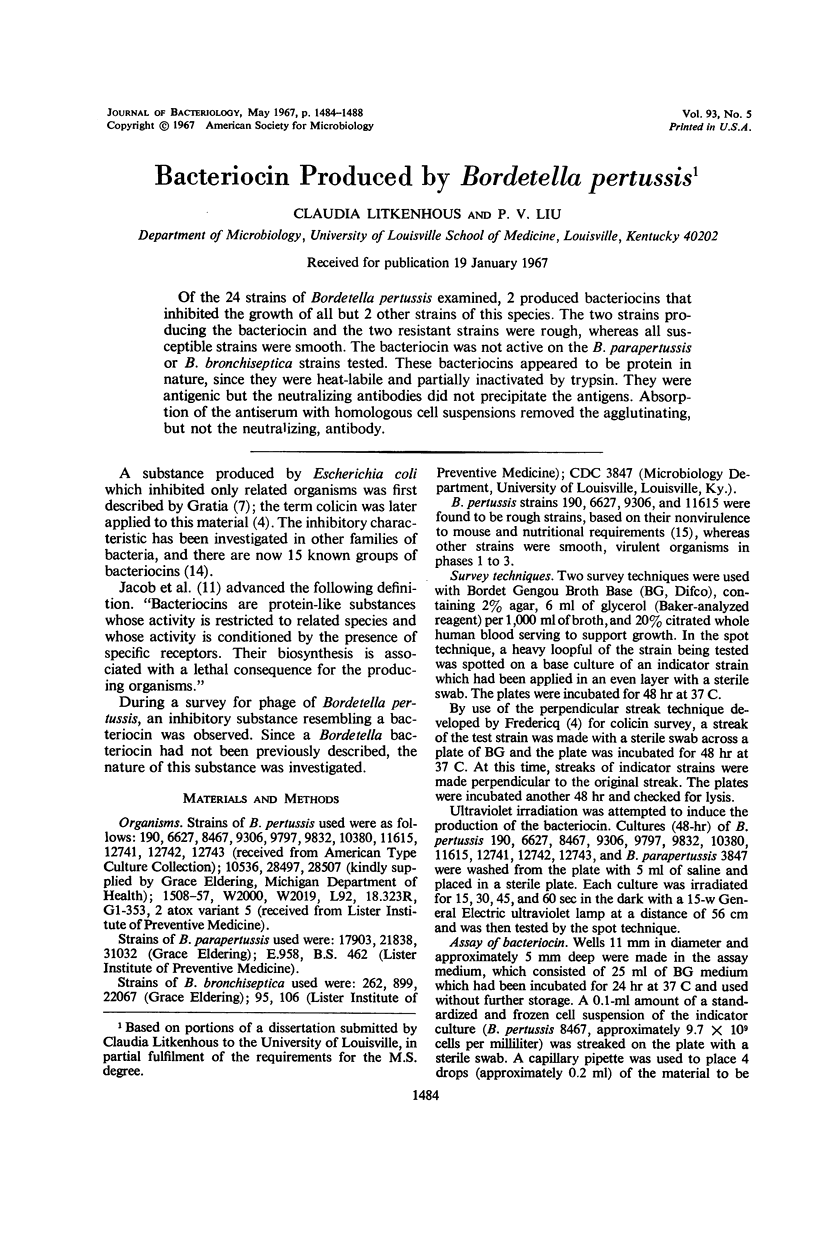
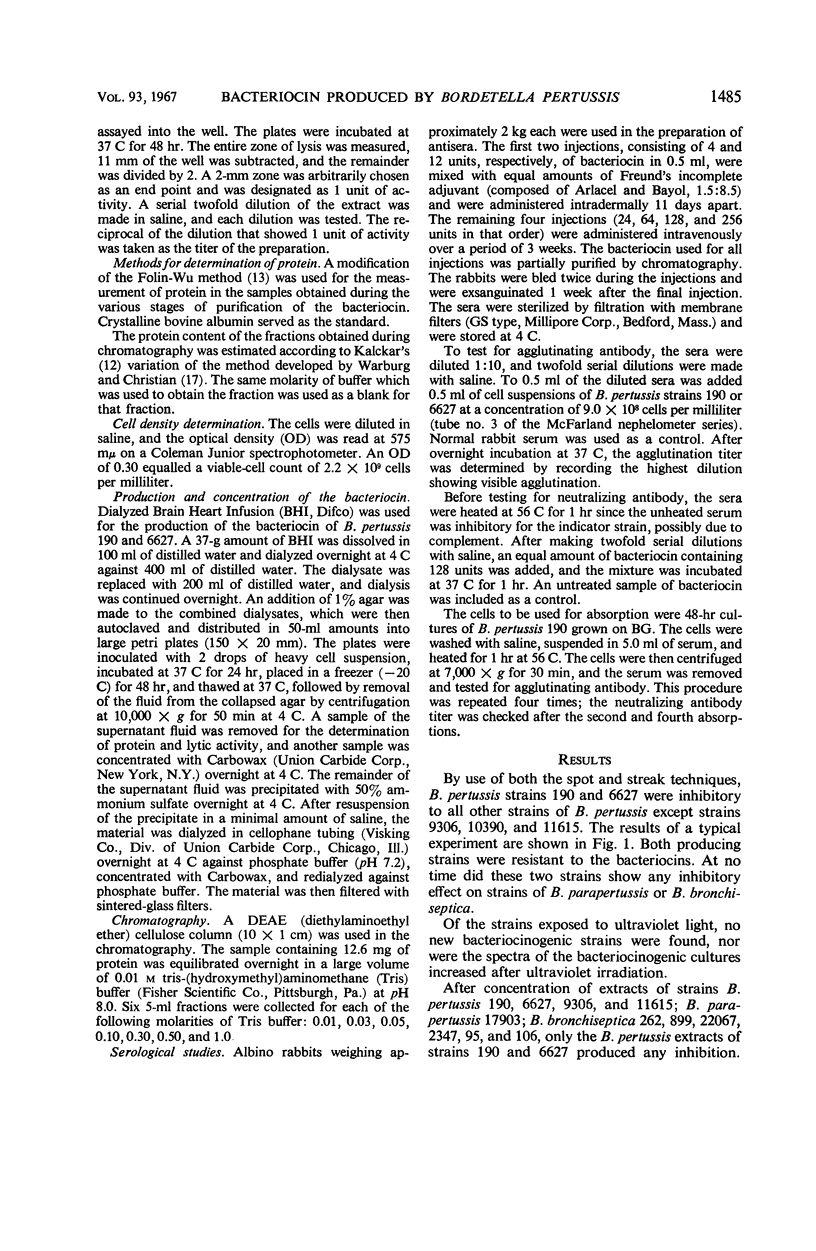
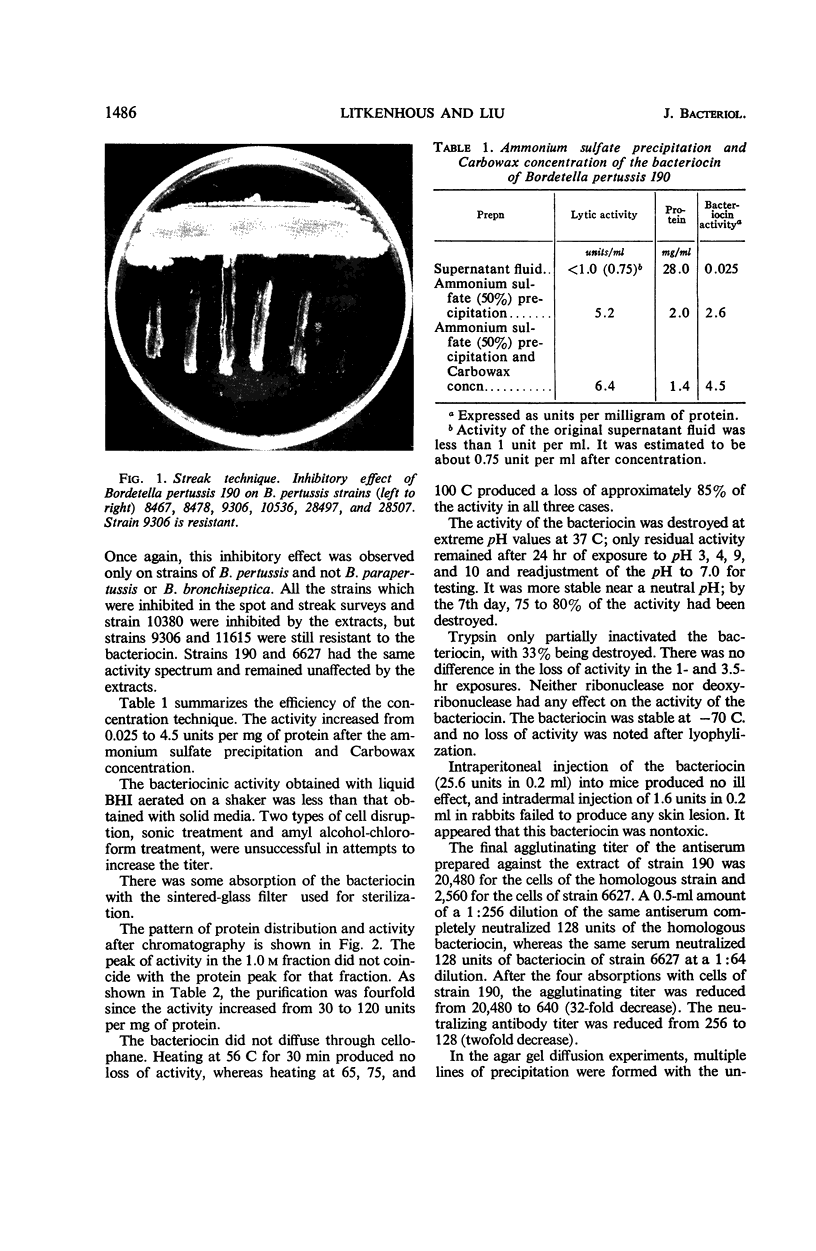
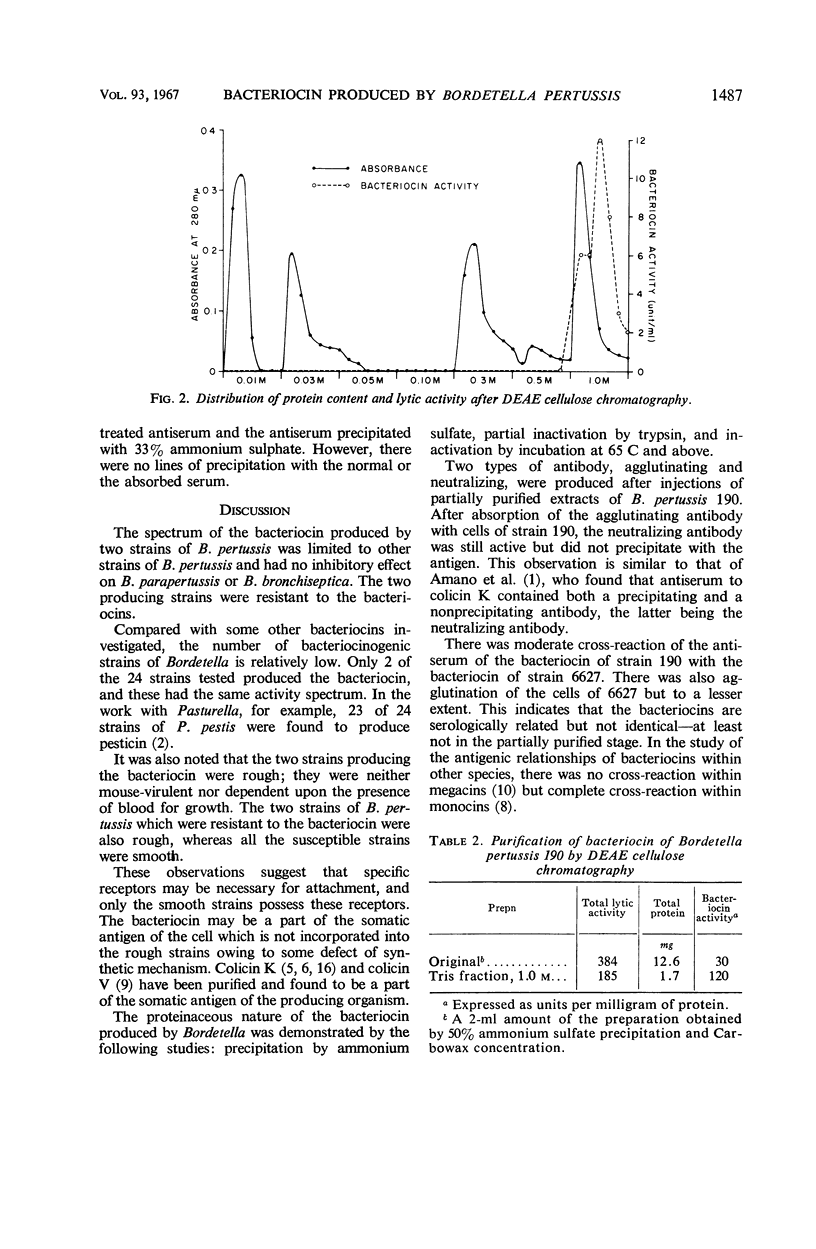
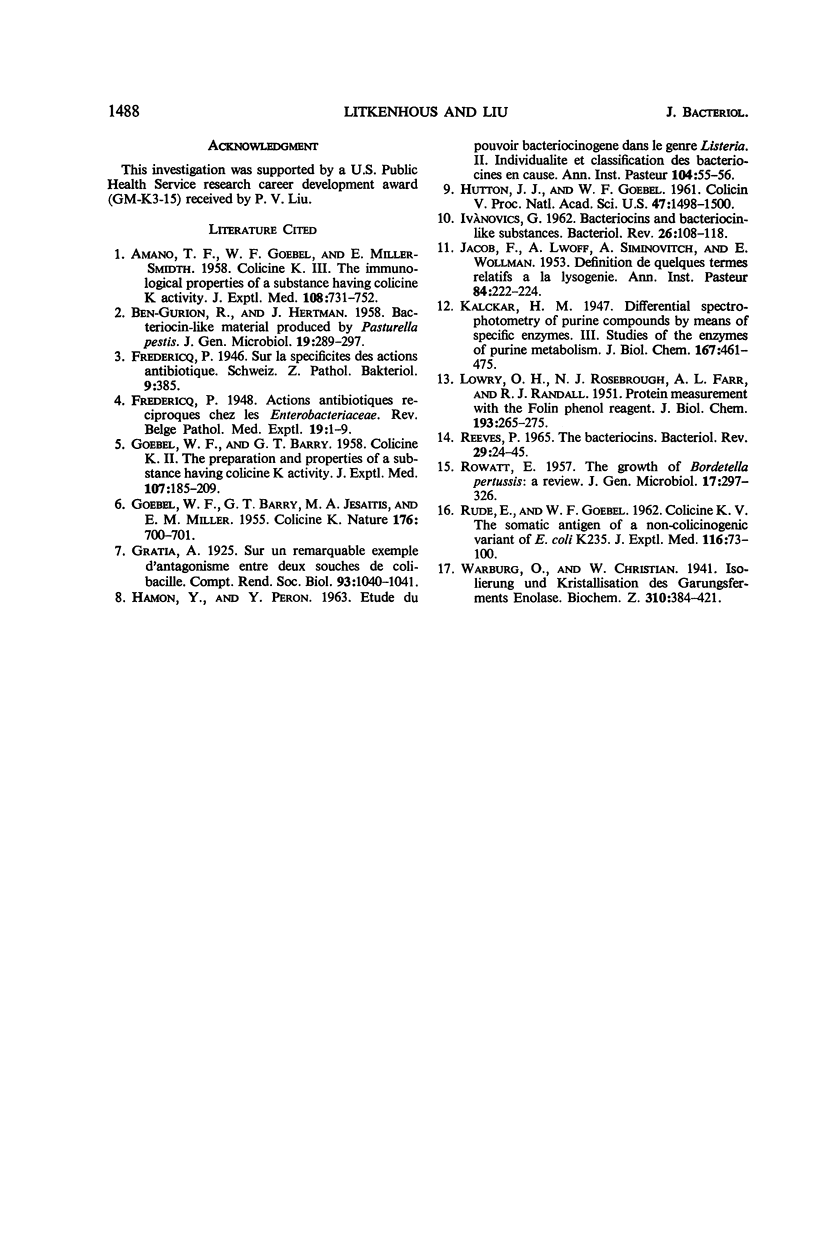
Images in this article
Selected References
These references are in PubMed. This may not be the complete list of references from this article.
- AMANO T., GOEBEL W. F., SMIDTH E. M. Colicine K. III. The immunological properties of a substance having colicine K activity. J Exp Med. 1958 Nov 1;108(5):731–752. doi: 10.1084/jem.108.5.731. [DOI] [PMC free article] [PubMed] [Google Scholar]
- BEN-GURION R., HERTMAN I. Bacteriocin-like material produced by Pasteurella pestis. J Gen Microbiol. 1958 Oct;19(2):289–297. doi: 10.1099/00221287-19-2-289. [DOI] [PubMed] [Google Scholar]
- GOEBEL W. F., BARRY G. T. Colicine K. II. The preparation and properties of a substance having colicine K activity. J Exp Med. 1958 Feb 1;107(2):185–209. doi: 10.1084/jem.107.2.185. [DOI] [PMC free article] [PubMed] [Google Scholar]
- GOEBEL W. F., BARRY G. T., JESAITIS M. A., MILLER E. M. Colicine K. Nature. 1955 Oct 8;176(4484):700–701. doi: 10.1038/176700a0. [DOI] [PubMed] [Google Scholar]
- HAMON Y., PERON Y. [Study of the bacteriocinogenic potency in the genus Listeria. II. Individuality and classification of the bacteriocins in question]. Ann Inst Pasteur (Paris) 1963 Jan;104:55–65. [PubMed] [Google Scholar]
- HUTTON J. J., GOEBEL W. F. Colicine V. Proc Natl Acad Sci U S A. 1961 Sep 15;47:1498–1500. doi: 10.1073/pnas.47.9.1498. [DOI] [PMC free article] [PubMed] [Google Scholar]
- Ivanovics G. BACTERIOCINS AND BACTERIOCIN-LIKE SUBSTANCES. Bacteriol Rev. 1962 Jun;26(2 Pt 1):108–118. [PMC free article] [PubMed] [Google Scholar]
- JACOB F., LWOFF A., SIMINOVITCH A., WOLLMAN E. Définition de quelques termes relatifs a la lysogénie. Ann Inst Pasteur (Paris) 1953 Jan;84(1):222–224. [PubMed] [Google Scholar]
- LOWRY O. H., ROSEBROUGH N. J., FARR A. L., RANDALL R. J. Protein measurement with the Folin phenol reagent. J Biol Chem. 1951 Nov;193(1):265–275. [PubMed] [Google Scholar]
- REEVES P. THE BACTERIOCINS. Bacteriol Rev. 1965 Mar;29:24–45. doi: 10.1128/br.29.1.24-45.1965. [DOI] [PMC free article] [PubMed] [Google Scholar]
- ROWATT E. The growth of Bordetella pertussis: a review. J Gen Microbiol. 1957 Oct;17(2):297–326. doi: 10.1099/00221287-17-2-297. [DOI] [PubMed] [Google Scholar]
- RUEDE E., GOEBEL W. F. Colicine K. V. The somatic antigen of a non-colicinogenic variant of E. coli K235. J Exp Med. 1962 Jul 1;116:73–100. doi: 10.1084/jem.116.1.73. [DOI] [PMC free article] [PubMed] [Google Scholar]



